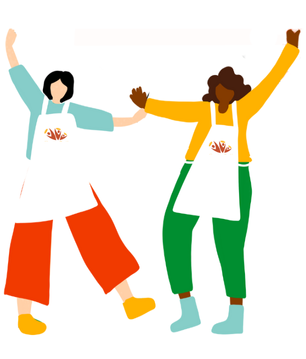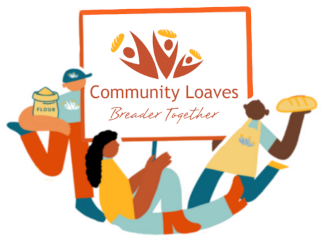Shared Leadership/Shared Responsibility – Baking A Difference Together
“Hubs thrive when their local community bands together to make the work happen.”
No two hubs or hub leaders are the same. Each has its own special talents and gifts for supporting this program. Nevertheless, there are essential attributes for every hub and hub leader that ensure the program’s success. Review the following leadership models and select one that works for you.
 Leadership Model: Co-Leadership
Leadership Model: Co-Leadership
We highly encourage Co-Leadership. This is defined as two dedicated individuals who understand and agree to share the role of Hub Leader. That doesn’t mean either does everything, but they work together seamlessly to ensure the full role is executed.
Why Co-Leadership Works:
- You have a partner.
- The work is easier and more sustainable thanks to the extra leadership.
- Two heads continue to be better than one.
- Co-leaders can lean into specific aspects of the work that fit their talents and interests.
- There is “baked in” support for vacation travel or unexpected emergencies.
- We all know how partnership encourages us all to “show-up.”
Adding shared leadership with volunteer delegates to your co-leadership model will further increase helping hands and decrease the work overall. (Read about the benefits of volunteer delegates below.)
Want to onboard a co-leader? We’ll help get you started! Email us at hubsupport@communityloaves.org
Leadership Model: Shared-Responsibility with Volunteer Delegates
Although we love the co-leadership model, it may not suit every situation. An alternative model is shared responsibility with volunteer delegates. Shared responsibility means recruiting volunteers from within your hub or neighborhood who are willing to step into your shoes periodically and/or for a specific ongoing role.
Why Shared Responsibility Works:
- Increased hub engagement; involving your volunteers creates more invested hub members.
- The work is more manageable and more sustainable thanks to the extra support
- There is “baked-in” support for vacation travel or unexpected emergencies.
- You can lean into your unique talents and interests and share the hub leader role(s) that could be a better fit for one of your hub members.
- The best run hubs are buzzy like a hive with several volunteers/bakers familiar with work and excited have a particular role or assignment to fulfill.
- By way of example – The Edmonds Hub uses the following leadership model:
- Lynn Behrendt – Hub Leader
- Marty Ronish – Communications Specialist
- Valerie Stein – Manages the Flour Delivery
- Laurie Tollefson & Paul Watkins – Who provides transport of the donation each donation on Monday
- Bob Witzgall – Edmonds Food Bank liaison
- By way of example – The Edmonds Hub uses the following leadership model:
Assigning a Delegate:
Assigning a delegate is so easy, and it is part of your Hub Leader Toolkit.
- First, invite a volunteer to help. Find out their talents and interests and match them with one of the hub’s essential tasks.
- Next click on “Delegate Duties” from your hub leader toolbar.

- On the Delegate Duties page, you’ll have a list of all hub members. Scroll down, find your volunteer, and then select “Delegate” from the drop-down box. Notice in the example below that you can give the individual a “specialty” if you want. Current options are “All-Rounder”– a volunteer capable of supporting you in any task, “Communication/Cheerleader”–someone interested in welcoming and cheerleading hub members via the communications tool, “Food Bank Donation” — an individual who is keen on taking the donation to the food bank, “Flour Delivery Organizer” –an individual who can help sort and prepare the flour delivery for baker pick-up.

- When you give a volunteer delegate status and assign them a delegate role, their volunteer dashboard automatically gets the hub leader tools for them to use to complete their role.
Best Practices When Asking For Help:
Asking for help doesn’t come naturally to all of us. Often, we hesitate out of kindness and a desire to keep the program as easy for the bakers as possible. For many, the hope with the “don’t ask for extra help” approach is that focused bakers will donate more. We’ve learned that the opposite happens; when bakers are not invited to participate in other aspects of the program, they lose the opportunity to connect more meaningfully with the program’s mission, namely, building community and reducing hunger at our food banks.
Suggestions for inviting hub members to help and consider taking a more active shared role.
- From the get-go in your welcome letter, let volunteers know that you could use help.
- Although you don’t need to be home for every donation, once every quarter, be sure to be home for the entire donation period. Greet each person as they drop off their items, and share your needs for help.
- Use the “ride along” approach; invite volunteers to ride with you to the food bank on Donation Day or to be with you at your house to greet bakers during Donation Day. Feeding two birds with one seed, prospective delegates learn the ropes while you build new connections.
- Flour pick-up: If you need help and don’t have it, when folks pick up their supplies, show them the effort and invite them to help you next time. Plant the seed in the middle of the task.
- Start with asking for help with the easiest tasks.
- Make requests even when you don’t need it. This builds a culture of helpers ready at any time.
- Use the volunteer tasks to invite folks to easily sign up! LEARN MORE ABOUT THIS TOOL!
- Think creatively when recruiting help. For almost all delegated work, the volunteer does not need to be someone who bakes; they could be a helpful neighbor next door.

